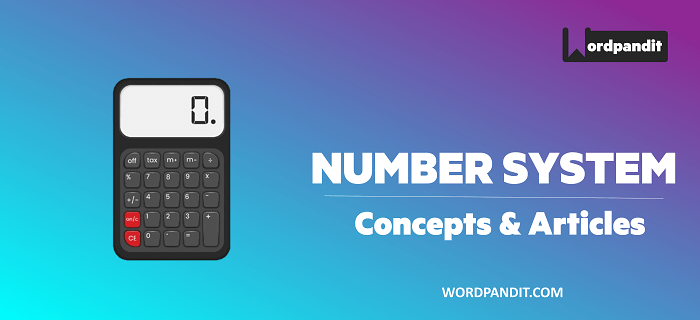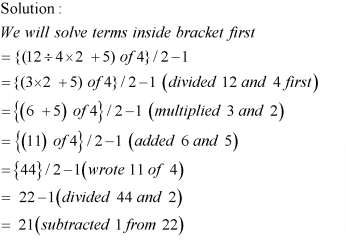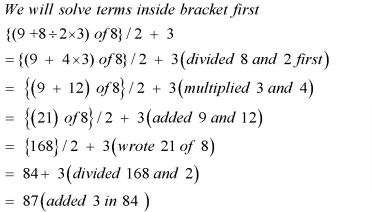How do we solve questions involving mathematical operations involving addition, subtraction, multiplication and division? The answer to this question is that we follow a particular order to solve the problem. This forms the basis to solve any kind of question.
The order is known as VBODMAS.
VBODMAS: – It stands for (Vinculum- Bracket – Of –Division –Multiplication – Addition – Subtraction). This is an extended version of BODMAS.
V stands for vinculum or Bar (Bar which is used to show recurring numbers for e.g.![]() ) .
) .
B stands for Bracket for e.g. () , {} ,[]
O stands for Of
D stands for Division [![]() ]
]
M stands for Multiplication [X]
A stands for Addition [+]
S stands for subtraction [-]
Let us see some examples based on this.
Example 1:
What is the value of N=4+5-7?
Solution:
According to BODMAS, first addition should take place and then subtraction.
So, N =(4+5) -7 = 9-7 = 2
Example 2:
What is the value of N= {(4 +5) of4}/3 + 2?
Solution:
We will first solve the bracket, N = {(9) x 4}/3 + 2 = 12 + 2 = 14.
Let’s try out some more questions.
EXERCISE: –
Question 1: ![]()
Answer and Explanation
Question 2:
What is the value of N = {(18 ÷ 3 × 2 + 1) of 8}/2 + 5?
Answer and Explanation
Question 3: ![]()
Answer and Explanation
Question 4: Solve 2 × 6 + 3 – 4/2 – 5 + 20/5 × 3 + 50
Answer and Explanation
Question 5: Solve (3+3-5) × (15-5) × 10 – 99















